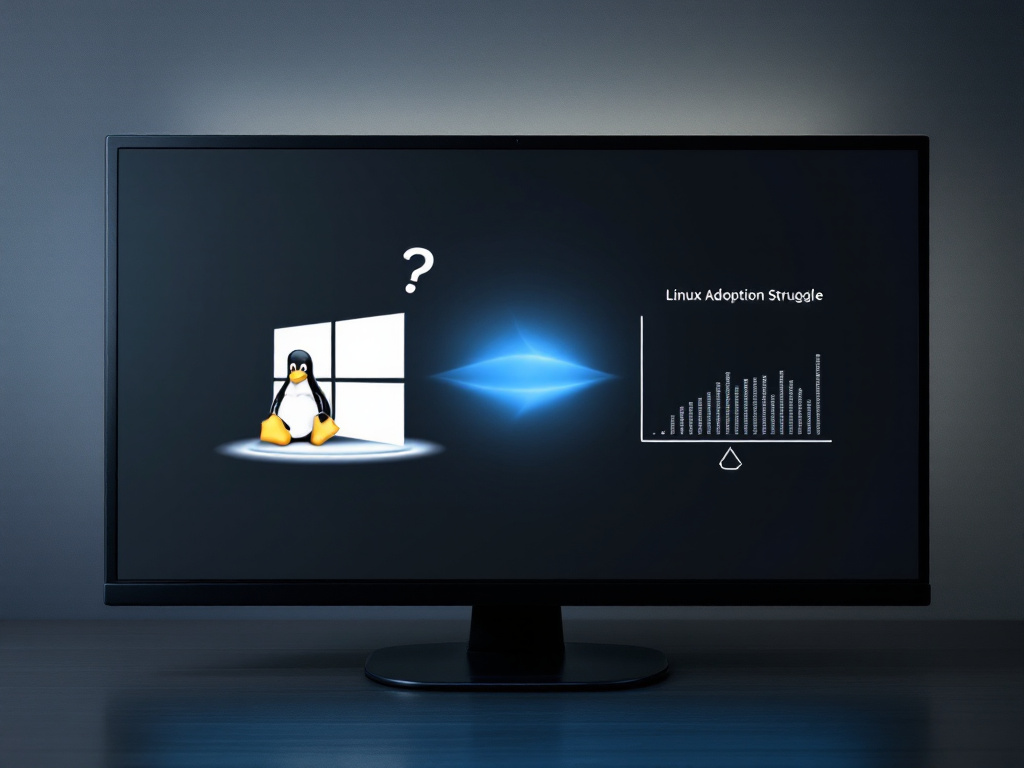Why Linux Still Struggles: Myths, Realities, and Misconceptions
In recent years, the evolution of operating systems has made it possible to work, play, and manage daily productivity directly from the browser. With the widespread adoption of cloud services, online office suites, and even game streaming solutions, the adoption of Linux should be easier than ever. However, despite the maturity of open-source software, the transition from Windows and macOS to a Linux-based system still faces significant resistance—both real and perceived. But why?
1. The Weight of Habit and the Dominant Ecosystem
Habit is one of the biggest obstacles to Linux adoption. Most users have grown up with Windows or macOS, environments with familiar interfaces, pre-installed software, and extensive hardware compatibility. Additionally, many companies use Windows as their standard, forcing employees to remain within that ecosystem for work-related compatibility reasons.
2. Proprietary Software and Compatibility
Many professional and niche software applications exist only for Windows or macOS. For example:
Adobe Suite: Photoshop, Illustrator, and Premiere are industry leaders and lack native Linux versions.
Microsoft Office: Although alternatives like LibreOffice and OnlyOffice exist, many businesses require perfect compatibility with Microsoft documents.
Gaming: While Proton and Steam Play have significantly improved compatibility, some titles with DRM or complex anti-cheat systems do not work on Linux.
3. Misconceptions About Ease of Use
In the past, Linux was associated with tech-savvy users who frequently interacted with the terminal. While modern distributions like Ubuntu, Mint, and Pop!_OS have made the experience more user-friendly, the perception that Linux is "complicated" or "only for experts" persists.
4. Hardware Support and Drivers
Although the situation has improved significantly, some hardware devices still face compatibility issues, particularly niche peripherals like printers, Wi-Fi cards, or the latest GPUs. Some manufacturers do not release official Linux drivers, requiring users to find alternative solutions.
5. The Role of Marketing
Microsoft and Apple invest billions in advertising and partnerships, while Linux relies on community support and word of mouth. This affects market perception: many users don't even consider Linux as an option because it is not promoted through traditional channels.
6. The Distribution and Fragmentation Problem
The vast number of Linux distributions is a strength for experienced users but can confuse newcomers. Which one should they choose? Ubuntu, Fedora, Arch, Debian? Too much choice can be overwhelming and paralyzing.
7. Integration with Proprietary Services
Many people use cloud services like OneDrive, iCloud, or corporate software that lacks native support for Linux. While alternatives exist, the lack of direct integration can be a deterrent.
Despite Linux being a mature and powerful operating system, switching from Windows and macOS is still hindered by technical factors, established habits, and misconceptions. However, the growing adoption of open-source software and the improvement of hardware and software compatibility could make the future more favorable for Linux. Will the penguin-powered OS be able to capture a broader audience? Only time will tell.








Leave a Comment